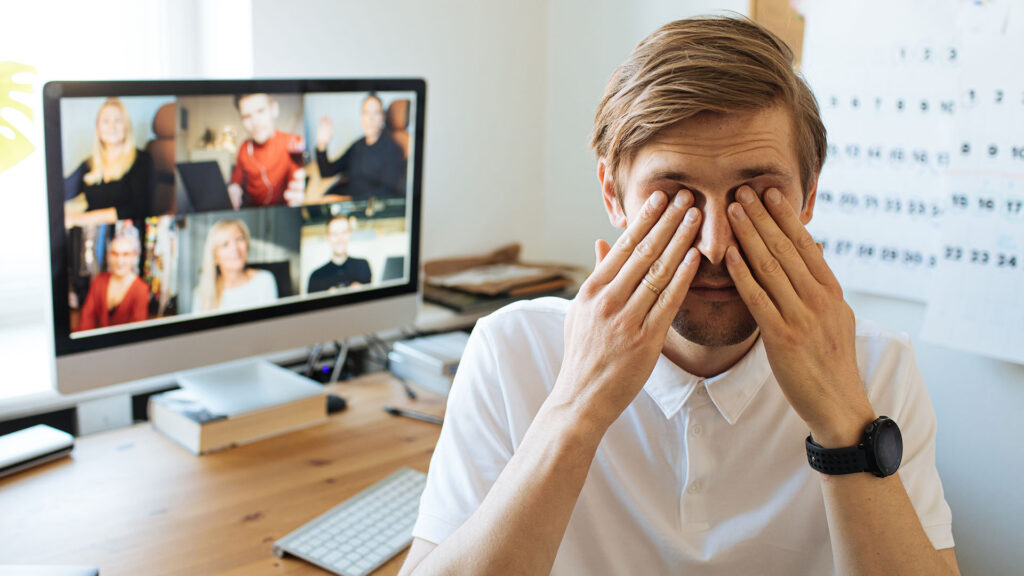Digital fatigue is the disengagement or exhaustion that occurs after using numerous digital tools and apps concurrently. Digital fatigue is common, and there is a high chance that you have experienced it even without knowing it.
The effects of digital fatigue have been found to have increased exponentially since 2020, due to the high number of devices and digital platforms and their prominent use in everyday life. It’s further exacerbated by the popularity of remote work and how it has led to eliminating activities like having lunch with colleagues, screen-free commutes, or face-to-face meetings.
As symptoms of digital fatigue worsen over time and are caused by prolonged exposure and repeating certain behaviors, it’s possible to lessen the risks or avoid the symptoms all together. Among them, are irritation to the eyes or worsened eyesight, migraines or headaches, and losing focus or not being able to retain concentration. Here are a few ways to prevent and relieve digital fatigue.
Take Screen Breaks

It’s no secret that too much screen time can be harmful to your health. Be it scrolling down social media, reading news, using computers for work, or looking at screens for long, excess screen time has been linked to eye strain and sleep problems.
To reduce the negative effects of screen time, you need to take 5 to 10 minutes to break off the screen every hour. Taking screen breaks gives your eyes a chance to rest and focus on something else. It also allows you to stand up, stretch, move around, tick something on your to-do list, and readjust your posture.
Screen breaks allow you to refocus before going back to what you were doing mentally. If your children are taking online classes, encourage them to take breaks too and advise them on how to spend their time away from screens to reduce the temptation of returning to them.
One Central Communication Platform
The corporate world is full of communication options to help keep work fluid. Multiple communication channels can add to the confusion as you may find employees focusing more on social media communications which increases the risk of distractions.
A centralized communication system like UCAAS can help increase transparency and ensure that everyone is on the same page. UCAAS is a centralized communication system that helps increase transparency and ensure that everyone is on the same page. With many communication platforms, and emails flying back and forth, it’s easy to miss crucial information. To get a personal demonstration of what a UCAAS system can do to reduce fatigue, visit https://www.ringcentral.com/ucaas.html.
One central communication platform can help you define your audience, and it makes it possible to communicate with each individual or group rather easily. When you work with a delegated communication platform for a certain project, your team will only be subjected to information surrounding the task without distractions from social media, reducing fatigue.
Encourage Taking a Nap

Every day is a balance between screen time and personal events. Therefore, it takes conscious intention to move away from digital screens. It’s easy for you to take a 15-minute break to scroll through your device, but it’s equally important to create space and disconnect by taking a nap.
Closing your eyes to rest is an excellent way to break from digital devices and is good for your health. Taking a nap is considered an essential fatigue countermeasure. Strong scientific evidence indicates that your brain benefits more from a brief period of actual sleep than simply spending quiet time away from a work station.
For that reason, it’s worthwhile, to take a brief nap during the day, for at least 15 to 30 minutes. If given the opportunity, it’s a valuable proposition to incorporate a relaxation or recuperation space within a workspace or office for staff to utilize during the day. As work spaces are evolving with the times and making a significant shift to hybrid and flexible work arrangement-friendly layouts, it’s well worth the investment and consideration.
No Unnecessary Meetings
Prolonged and unnecessary video calls can hamper employee productivity, so it’s only best that work teams avoid them when possible in lieu of messaging. Whatever you can resolve through email correspondence you should intend to do so, as not all conversations or issues necessarily require a video conference.
Beyond stunting the potential of employees for what they can achieve on a daily or weekly basis, holding unnecessary lengthy or frequent meetings will likely result in digital fatigue as well. It’s recommended that employees cap the number of hours they spend in daily meetings to two or three at most.
If in special circumstances or higher workload periods it’s absolutely necessary or unavoidable to participate in more meetings, there are ways of reducing the effects of digital fatigue. The most significant or impact being the length of the meetings, the number of breaks during meetings, and organizing the meeting in a structured, efficient way.
Following those guidelines, meetings should be less straining on attendees and enable them to recover from the Zoom or “meeting mindset” that can be more mentally straining than typical desk work.
Dangers of Digital Fatigue

Live experiences are now happening on screens in front of us, and devices have become part of our lives. People are now getting married, celebrating birthdays, and conducting businesses with the assistance of a device. While you may not see a problem with this, this is not normal, and the long-term effects of digital fatigue are yet to be fully explored.
There was a clear differentiation between work life and home life in the past. With the emergence of remote working, the difference no longer exists as any place and time can turn into a workday. This daily overload can put you at risk of digital fatigue, which causes a lack of energy, burnout, mental clarity, along with physical and psychological effects on your overall well-being.
Anticipating these effects and mitigating them is important to working efficiently and on a consistent basis. The typical desk job will require a worker to spent the majority of their day in front of a screen or computer. This is an inevitable reality in today’s heavily tech-reliant working environment. Making little changes to break up that time can make all the difference in how one mentally and physically feels, giving them relief and motivation to perform to their best ability.



